Float like a Necromorph, sting like a Biophage.
The original Dead Space was an exciting entry into survival horror, inspired by the revolutionary Resident Evil 4. While the later titles would adopt a more action focus than its horror beginnings, it was nonetheless an impressive series that would, unfortunately, see the studio's eventual closure and EA simply sitting on the license. While Dead Space is set to return with a remake early next year, its spiritual successor in Callisto Protocol has finally been released. While it does certainly look to fill the stomping boots of its predecessor, it sadly does not live up to the hype.
When Callisto Protocol was first revealed, many were justified in being excited about it. This was a successor to Dead Space in all but name and was being helmed by one of the game’s original creators, Glen Schofield. His new studio, Striking Distance, would take aim to create a whole new property that carried the Dead Space torch, so to speak. And with the game’s credits and post-credits scene now recently behind me, I can honestly say that Callisto Protocol isn’t really the Dead Space clone I had imagined it to be.
Now, it certainly shares in a lot of the aesthetics, religious fanatic-like origins of its grotesque abominations, the eruptions of gore as you blast limbs off left and right, and the ol’ boot-to-the-ground stomp. But Callisto Protocol isn’t really that similar to Dead Space in the ways I think fans of the series were expecting or foaming at the mouth for. This is an action-focused third-person shooter with strong brawler elements that is incredibly linear, and largely simplified when it comes to its shallow enemy variety and limited combat options. It’s also worth pointing out that at no point during its 8-10 hour length is Callisto Protocol even the slightest bit scary, not even once.
Callisto Protocol places you in the boots of Jacob Lee, a cargo ship pilot who is hauled away to Black Iron prison after barely surviving a crash landing on the planet’s surface. This is interesting since Dead Space’s original plot was built around this exact idea, only later changed to have Isaac Clarke become the engineer we all know and love. While Jacob is brought to life by actor Josh Duhamel, who many likely know from the Transformer movies, the character that is Jacob is barely explored and comes off as a tool used to get us from point A to B. He has zero depth and there is nothing for us to latch on to, making it next to impossible to care if he survives by the game’s conclusion.
While this largely translates to most of the cast as well, with The Boys’ Karen Fukuhara and Supergirl’s Sam Witwer filling out the game’s supporting cast, it is the latter that was so impressive that I sort of wish Witwer was the lead here. Witwer steals every scene he is in; however, his presence in the game is largely minimal which is tremendously disappointing. You do have a few other characters that are central to parts of the game, but few really stand out or are in any way memorable.
Despite taking in every episode of The Boys, this is the first time I’ve actually heard Karen Fukuhara talk, given her character is mute in the tv show. While it takes a while for Karen’s character, Dani Nakamura, to be injected into the story in a more consistent way, I was far more interested in her arc than that of Jacob’s. I’m sure you can see a pattern here. It’s not that Jacob’s narrative is bad or even remotely lacking, it’s just that everyone around him is drastically more engaging and far more interesting.
Callisto Protocol certainly does mimic a few of Dead Space’s narrative hooks, but rarely does anything that we haven’t already seen a dozen times before. Similar to Jacob, the story that the game is trying to tell isn’t necessarily bad, but it doesn’t feel like anything substantial is happening as there is nothing tangible to hold on to. We have a beginning, a middle, and an end, but even then the game leaves just enough open with a cheap cliffhanger that doesn’t feel earned whatsoever.
The main thrust of the story is simply Jacob searching for a way to get off the planet’s surface, escaping the prison with numerous plot anchors being attached that grant us a bit of insight into the monstrosities that fill up the prison and outside its borders. Granted, much of this insight is in what I like to call “The Hallway of Exposition” where a few holographic stations bring us up to speed as if we are attending a museum tour of this Biophage threat; it’s hilarious once you’ve slowly walked through each lore beat one after another and realize that this is precisely what it is.
While the game spends a decent amount of its time within the walls of its prison, the entirety of its multiple environments feels largely basic and downright generic at times. Granted, the very locations you trudge through are gorgeous to no end and meticulously detailed, but nothing feels even the slightest bit as memorable as the Ishimura in Dead Space, the Town of Silent Hill, or the Spencer Estate in Resident Evil. Those worlds felt alive and a wonder to explore as there was a sense of interconnectivity that made them feel like real places. Here, you don’t get anything close to that sensation as these areas are used a single time and discarded as you are pressed to move on. Had the prison been the only location, revisiting sections of it later on under different circumstances, then the game could have had a location that is associated with its identity.
While the bulk of the game has you moving through what is essentially one hallway after another, Jacob does an insane amount of crawling to bypass locked doors and various other obstacles. From vents to tunnels to monstrous gunk, to literal shit, your boy is going to get on his stomach damn often and be locked into the same crawling animation over and over again. Hell, in one particular section alone, you crawl through four vents within a span of around 20 minutes. While this is likely meant to be choke points to load new areas, I would have at least been fine with it if Jacob had additional animations or even spaces high enough to slowly crouch walk through the occasional time instead of the same crawling sections copied and pasted everywhere.
While you’ll have the occasional off-the-beaten path to explore, there isn’t any sort of objective marker, map, or indication of what is the main path and what is a loot-centric dead end apart from the room titles above each door. It is easily possible to miss out on that sweet dead-end loot that is likely wondering if you’ll ever show up. With the game’s singular focus on pushing forward, it eliminates the act of backtracking to collect previously left items or return back to the shop to sell items to upgrade something you were so close to doing so beforehand.
There were several moments where I would leave the room containing the shop, find something to sell a mere 15 steps outside of the room, and find that the door behind me was somehow locked for no reason whatsoever, forcing me to hold on to this sellable item or discard it in favor of more health or ammo. If the door had been damaged or I had jumped down a great height and couldn’t climb back up, I’d be fine with it, but it was merely a door that locked behind me that had the shop right there on the other side of it.
When you start your life as a prisoner and begin your escape, you’ll have a very limited inventory system that you can eventually upgrade a few hours in. Once you’ve found the space armor that Jacob has on the cover of the game, you’ll be able to double your carrying capacity to twelve, upgrading the game’s initial inventory space of six slots.
The biggest issue is that while six slots isn’t enough to really pick up everything you come across, the addition of numerous weapons you find later on has their ammo taking up nearly all of your newly acquired carrying capacity due to stacked ammo allocations, making that extra space feel largely useless. Had ammo not been stacked in multiple slots, then most of my issues with the inventory system would be fixed, allowing you to still have some limitations so that you still had that aspect of having to leave some items behind in favor of others. A risk-reward system is fine if it is done properly, and I don’t feel that is the case here.
Part of exploring each location to its fullest is also towards tracking down a series of audio logs. While several of them are throwaway dialogue to fill this station with “real” people wondering just what the heck is going on, there are several that detail the inner workings of what really is going on there, especially that of the prison’s Warden, a man who has his own mystery about him. While it is easy enough to pull up the menu to listen to these files, I sort of wish the presentation about them was a bit more involving than just seeing an audio wavelength play out during these recordings.
As Jacob is tasked with escaping the prison and trying to survive the horrors that await him, you’ll engage in combat with a fairly small selection of creatures both big and small. Combat and the methods of dealing with these monstrosities are where Callisto Protocol and Dead Space differ greatly. Callisto Protocol does feature a small arsenal of weapons but its combat focus is that of a brawler fist and shooter second, complete with a dodging system that gives the game a type of combat system mostly found in a boxing game. While the initial tutorial doesn’t quite explain it well enough, its after-the-fact explanation does a better job of detailing just exactly how it works.
Jacob’s main melee weapon is a stun baton that can be upgraded to allow for additional attacks such as a heavy attack or a low strike that drops enemies to the ground. But, between those swings, you’re going to dodge a lot of incoming attacks and this is where most of what is offered here fails to remain fun for the whole game. Instead of having a dodging system built around a button and then inputting a direction, you merely hold left or right on the analog stick to have Jacob auto-dodge each incoming attack. While trying to block a strike coming from the left may have you instinctively wanting to dodge in such a way for that direction, you simply have to ignore that impulse and hold either of the two directions.
When you are facing a single enemy, this system works great, and the lock-on nature of how combat works make this type of engagement make sense to what is created here. However, once you start to add in several additional foes, this is when you start to see the cracks in such a system. As you get surrounded, the targeting system for the dodge won’t know which enemy to really focus on. And since you cannot backstep or comfortably escape combat to give yourself distance, if surrounded, you often have to just keep swinging and holding the analog stick to pray that it dodges the enemy you personally are focused on. This can create very tense and panic-inducing situations, but they feel built upon being a by-product of how the system works than anything intentional in its design.
After you perform a series of melee attacks, you’ll have a prompt show up indicating that you can target a weak spot on whatever enemy you are primarily focused on. While the targeting is somewhat janky and the camera zoom a bit awkward, you can usually eliminate a foe this way fairly easily. This timed attack can feel fairly arcadey for the wrong reasons, despite it being decently effective.
Where combat differs from Dead Space is that Isaac was never a strong melee fighter in the original. He had an awkward swing, but the tools he had in his arsenal made each encounter wildly impressive, largely due to the 211-V Plasma Cutter. This weapon became the go-to choice for dismembering since it allowed you to surgically cut off limbs in a way where you could have two enemies approaching and cut off the legs of one and then focus on the other as the wounded Necromorph hobbled towards both of you. This created tense encounters and offered a ton of combat variety in one single weapon.
Callisto Protocol has none of that strategy. It has rifles, shotguns, magnums, and a few others, but they all serve the same purpose and never feel unique in other than their bullet pattern or stopping power. Enemies react the same way to largely everything and it makes each encounter feel like you are performing the same basic commands and effort each time. The limited enemy variety then causes a great deal of repetition to fuel each encounter, regardless of the level, the layout, or anything the game throws at you; it is all very samey after the first 3 or 4 hours.
Now, complaints aside, combat does work here and under the right conditions does function well enough. I don’t find it immensely enjoyable, but Jacob’s melee hits pack brutality to each crunchy strike that is satisfying. Getting a headshot and seeing it pop is extremely enjoyable, but these are things that are largely a given if you make those systems feel polished enough. I still feel that Jacob has a sluggishness to his movement that makes certain encounters a bit more frustrating, and it doesn’t help that the camera zooms so far in when he runs that it is hard to tell if something that is following him is five feet from him or breathing down his neck. This was an issue I had with the final boss that resulted in a few deaths that didn’t feel earned.
The weaponry that Jacob has also looks to complicate matters as well. While Jacob has access to his stun baton at all times, his ranged weapons consist of a hand cannon, skunk gun, riot gun, tactical pistol, and an assault rifle, with the latter being my favorite weapon to use in the game. The skunk gun itself is sort of a pocket shotgun, whereas the riot gun is a full-fledged shotgun that packs considerably more punch. While the guns themselves are not the problem, it is that most guns operate as attachments of a core grip, meaning Jacob will have to detach and reattach the grip each time you swap weapons. Should your weapon not be reloaded, then you have a seperate set of animations to sit through as well. Combine that with a weapon selection system that isn’t fantastic to use in the heat of the moment, and you have a recipe for disaster. While there is a quick swap to your previously used weapon, all that is dependent on the amount of ammo you have, as some encounters can easily bleed you dry.
Adding to Jacob’s options is another callback to Dead Space, the GRP. This wrist-mounted device is very similar to the G.R.I.P/Kinesis module that Isaac wields in the original Dead Space. This allows Jacob to lift up and throw standard-size enemies across the room or into fans and other dangerous devices. As it stands, it is constantly satisfying to use, and upgrading it allows for it to be more effective more often. However, apart from using it to get the odd item that is out of reach, the GRP itself is often one note. Since Callisto Protocol has no puzzles or anything to add more depth to its encounters, it simply serves its one purpose of throwing enemies into various deathtraps instead of innovating and making it a more fleshed-out option to shake up combat. It puts the “fun” in functional, but that is about it.
Now, I’ve spoken a little bit about upgrades, so let’s dive more into this process. As you explore, you’ll find a series of advanced 3D printers. These handle your upgrades and manufacture whole weapons for you in seconds. It’s a clever system that allows you to sell various parts you find around the station to boost your overall earnings apart from the slim pickings of credits you’ll also find laying about. As you unlock new guns you will have more options to choose from. From adding explosive rounds to your hand cannon to adding higher capacity mags to your preferred weapon, these upgrades consistently feel worth it to invest in. And since enemies can be quite the bullet sponges, adding higher capacity damage to your kit is crucial to ensure you are not wasting a ton of ammo simply taking one foe down.
While there is a somewhat diverse cropping of enemies, there are very few distinct types that really make an impact here. You have the small larvae parasites which are small nimble creatures that often hide in lockers or chests, to the long-necked blood worms that you’ll constantly swear at the top of your lungs when they surprise you. Standard fare come in the form of a few variants of the biophage zombie, both those that are extreme aggressors to those that are blind. I still find it hilarious that you can loudly stealth kill these blind variants even next to one another, but the moment you stand upright and take a step they will hound you.
Where Dead Space had the “Cut off their limbs” mantra scrawled in blood atop the first workstation you track down, “Shoot the tentacles” takes over here as standard biophage can eventually mutate, making them far more deadly. Shooting or melee striking their growing parts can calm this process, but it certainly is a less impressive version of systematically hindering their movement by shooting out a leg or blasting off a sharp talon of an arm.
There are additional threats in those that spit acid bombs at you, which can be blocked by your stun baton luckily enough, to those that are bigger and bulkier and take a bit more abuse to put down. Despite all these different variants, you are going to see the standard biophage far more than anything else, regardless if it's those that are simply crawling around and explode if they get close to you, or the ones fitted in armor, mutated from several of the prison guards. There is also a cloaked creature that I saw only a few times or at least one that actually turned invisible, its cloak operating like that of the predator, but again, I rarely saw them.
Speaking of the guards, you’ll also have to contend with a few of the robotic prison machines that can be disposed of with a few headshots, but they are a one-hit kill if they find you. Thankfully, these enemies are few and far between and are either avoided with a bit of stealth or able to be put down with the aforementioned beheading.
Each of these enemies have various death animations for when they approach you. While there are a few variants to how they disembowel you, I grew tired of the death animations fairly quickly, pausing the game and simply reloading the checkpoint. This became a regular thing as while they are visually impressive and pretty damn gruesome, they wear out their welcome far quicker than I had imagined they would have.
While I won’t talk about the final boss, there are four mini-bosses you’ll encounter. Now, I say four, but it is honestly the same type over and over again. This two-headed creature can kill you either in one shot or two weaker slashes that it can often perform. While I enjoyed the final encounter of this creature, I wish that each version would have featured new mechanics or something other than “Oh, it’s this thing again..” and “What? Again?”. It’s an interesting creature, but fighting the same thing four times in as many hours felt lacking and felt like the game was stalling for time.
From the smallest detail to its biggest environment, Callisto Protocol is absolutely gorgeous. There are some fire effects that I find somewhat questionable, but there is rarely a moment in this game where you won’t be impressed by the game’s highly detailed environments to the strong character models, and motion capture work. Faces present believable emotion as does simply watching the sweat trickle down the back of his neck. Enemies all look as slimy and grotesque as you’d want them to be; however, I do wish there was a bit more variety between each type. Still, it’s hard not to be at least in awe at the graphical detail on display as the game constantly delivers.
Callisto Protocol is an odd one to really talk about without the constant comparisons to Dead Space. I know that much of my review comes off as “Oh, he didn’t like it because it’s not Dead Space” and frankly, yeah, sort of. This was a game that was talked about being the successor we’ve wanted in years since EA, at the time, seemed to not want to tackle that license again. Not to mention, it was being headed up by one of Dead Space’s original creators, one of the most well-known men behind that game, so yeah, Dead Space was always going to be its comparison. Then you also have the boot stomp, the GRP mechanic, and the “Shoot X body part” callout which are all direct lifts from that game.
Removing Dead Space from the comparison is certainly hard to do since Callisto Protocol goes out of its way to adapt so much of it. However, on its own, Callisto Protocol has a story that is largely forgettable with a protagonist that is simply nothing more than a tool to shoot things and move us from place to place. Its combat is certainly serviceable with satisfying melee crunches and headshots, but its lack of substantial enemy variety and combat diversity causes its 8-10 hour length to feel very rinse and repeat. I truly believe there is massive potential here to craft a fantastic new entry in survival horror, but it needs to address several issues first and most importantly, actually bring the “survival” and the ”horror” to the forefront.
Developer - Striking Distance. Publisher - Krafton. Released - December 2nd, 2022. Available On - Xbox One/Series X/S, PS4/PS5, Microsoft Windows. Rated - (M) Blood and Gore, Intense Violence, Strong Language. Platform Reviewed - Xbox Series X. Review Access - Callisto Protocol was purchased for review.


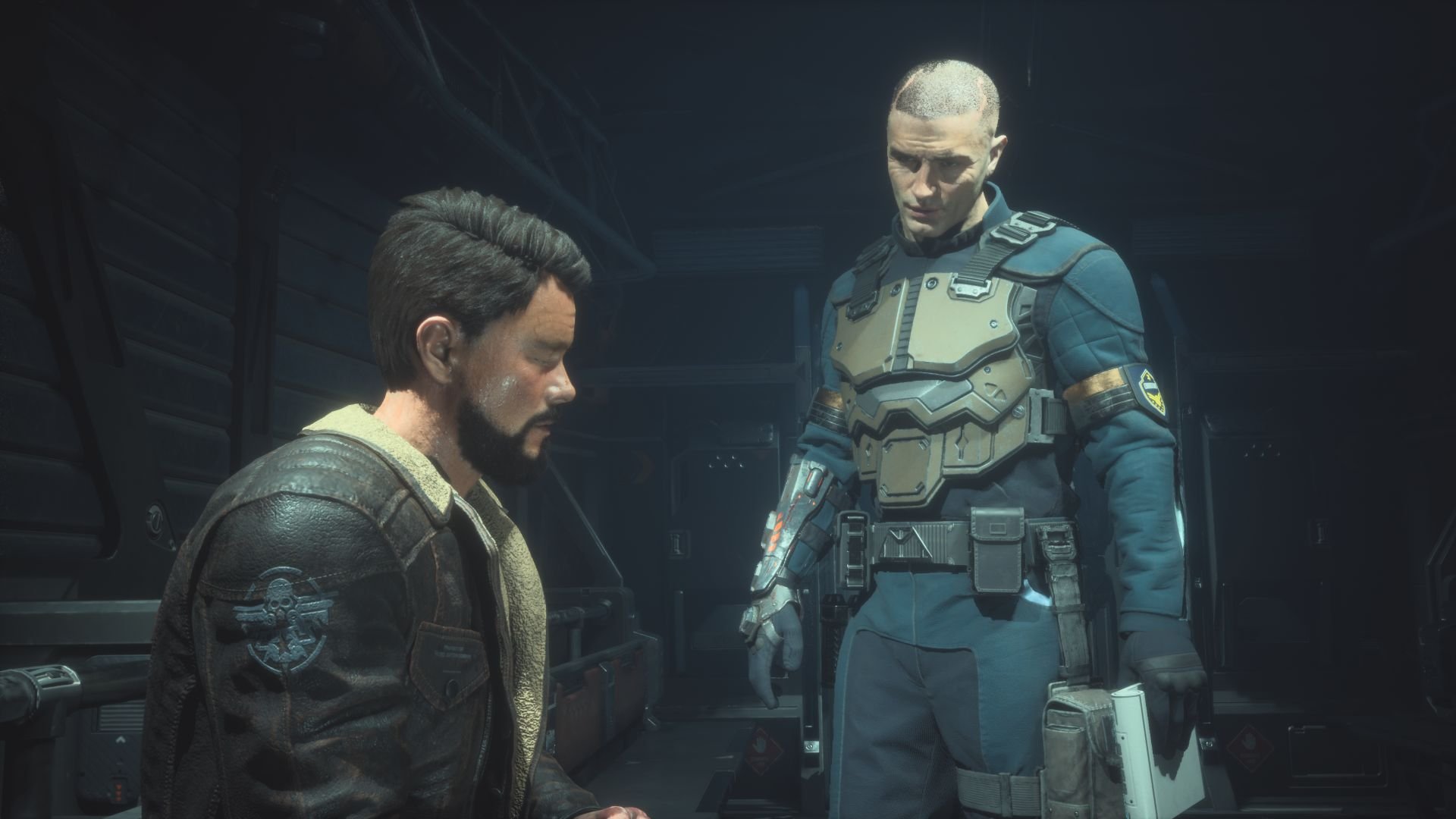
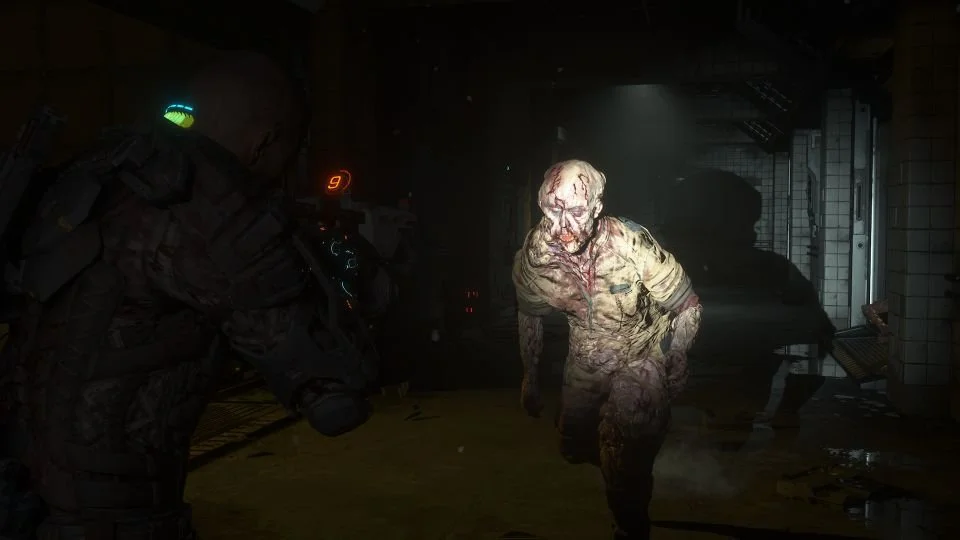
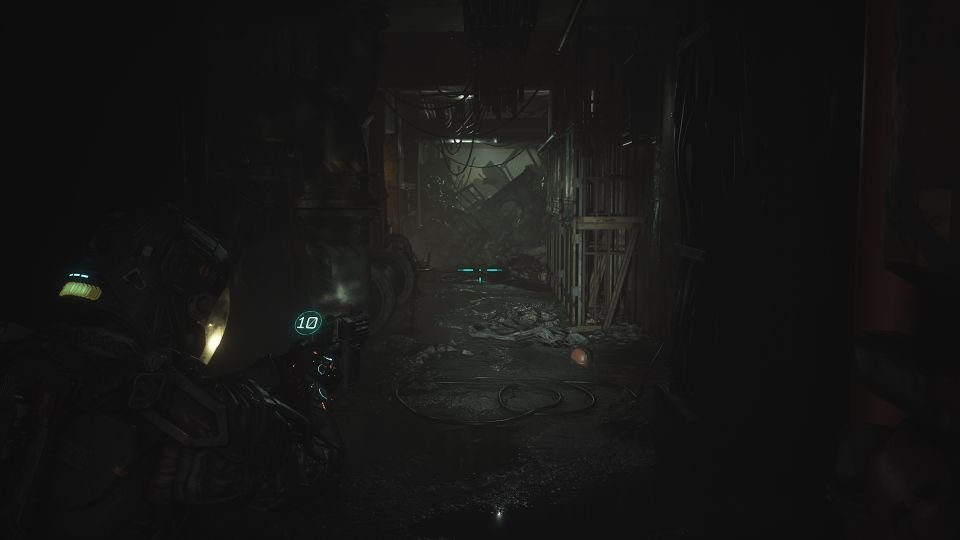

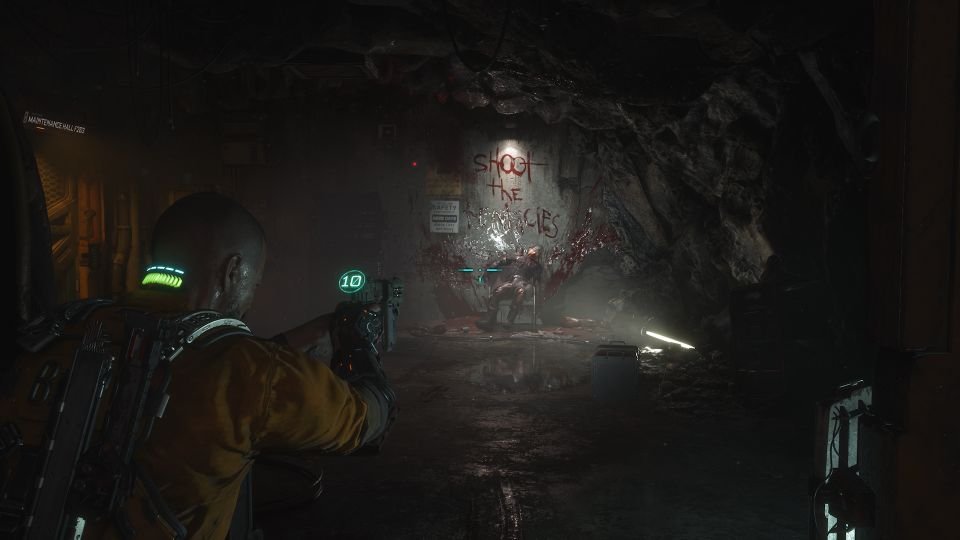

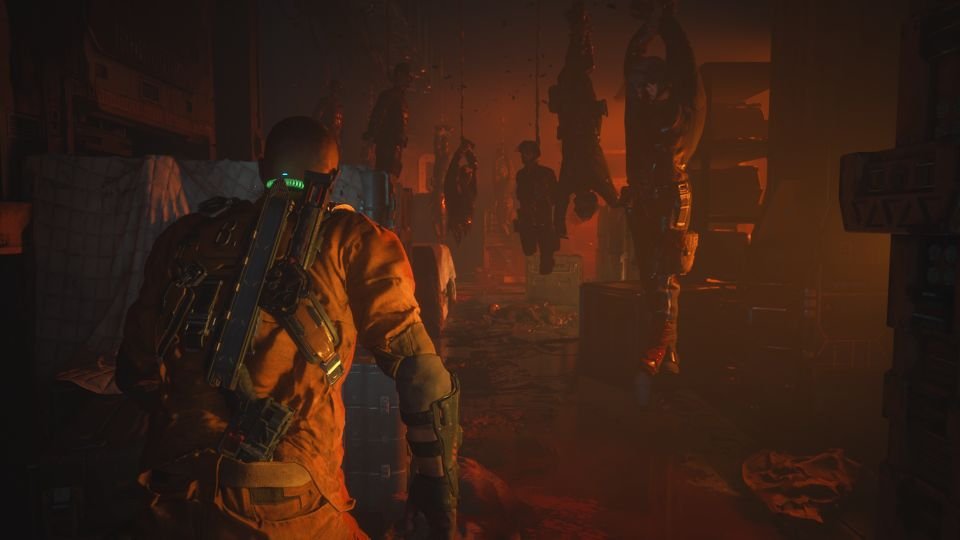
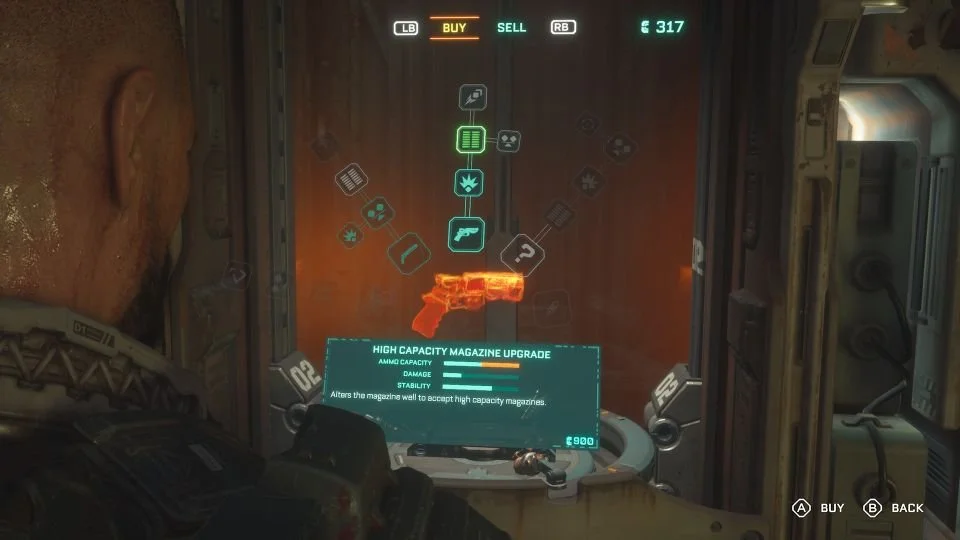

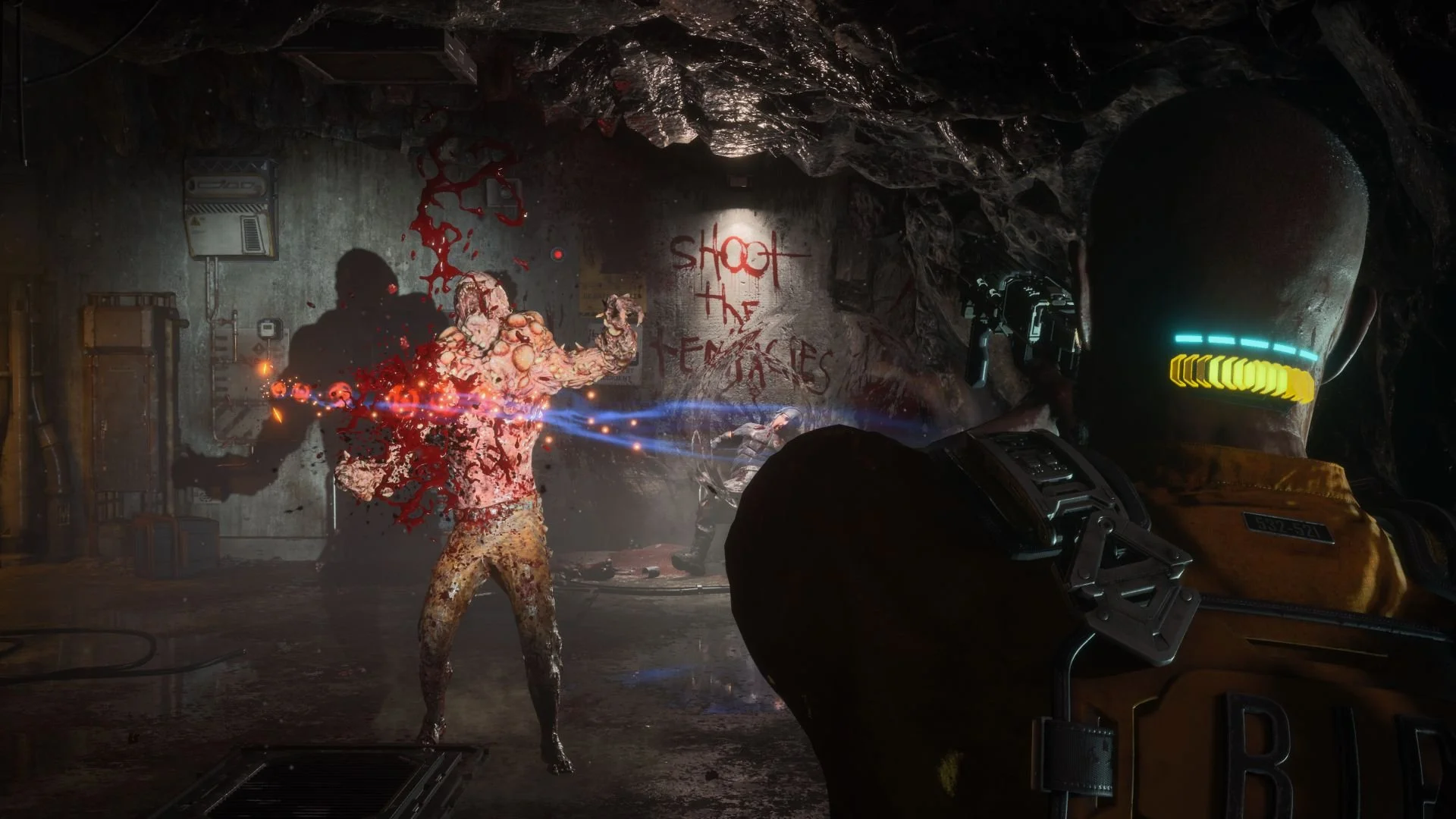
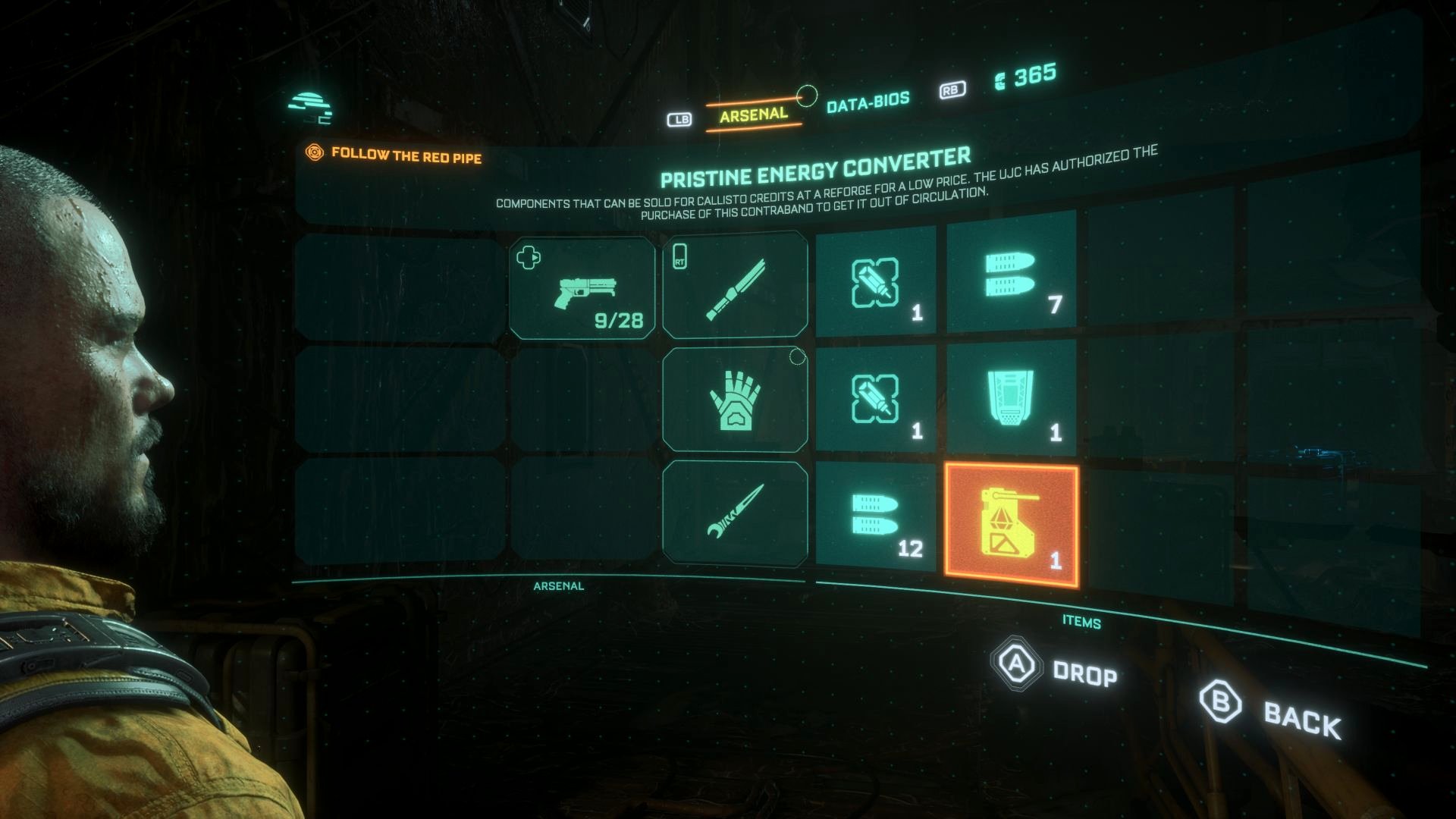




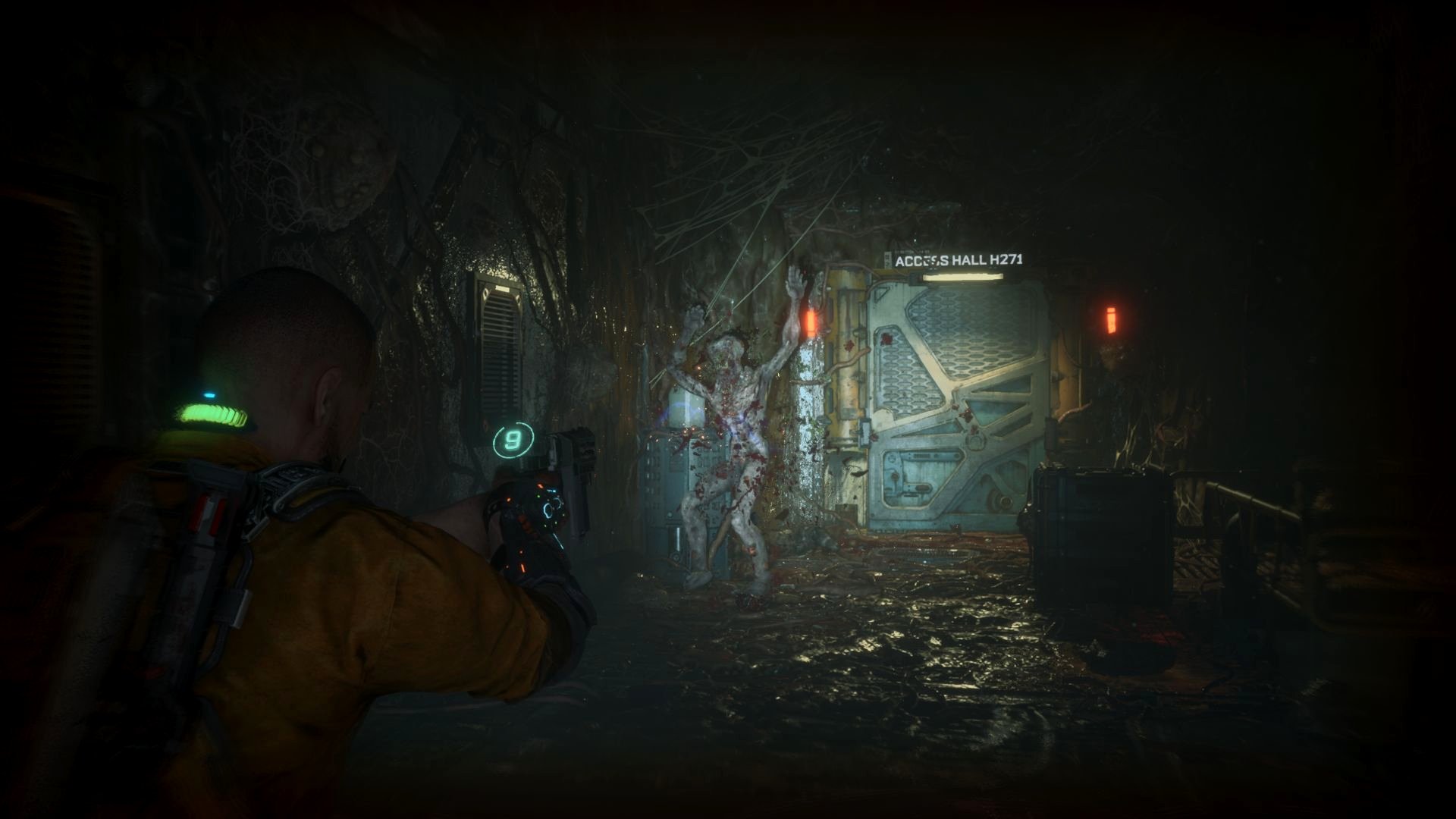
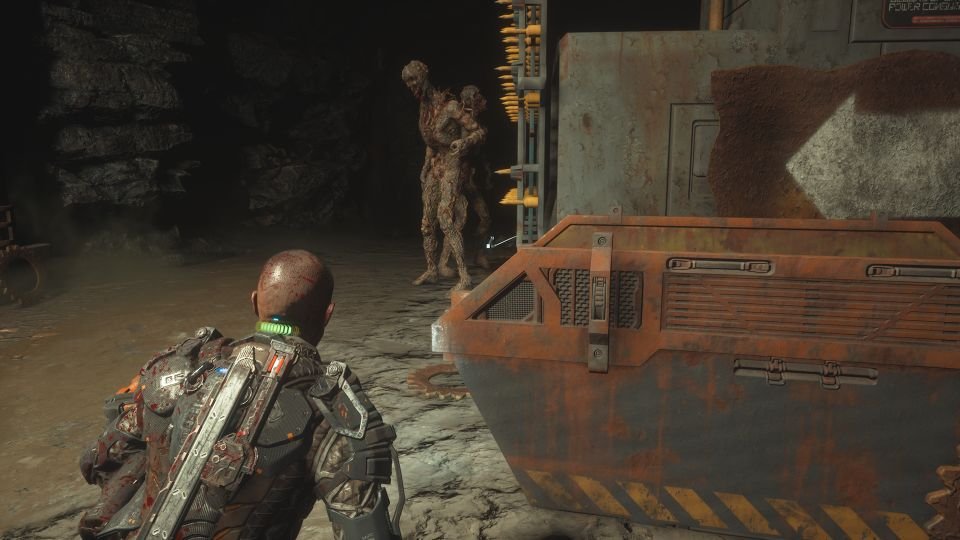

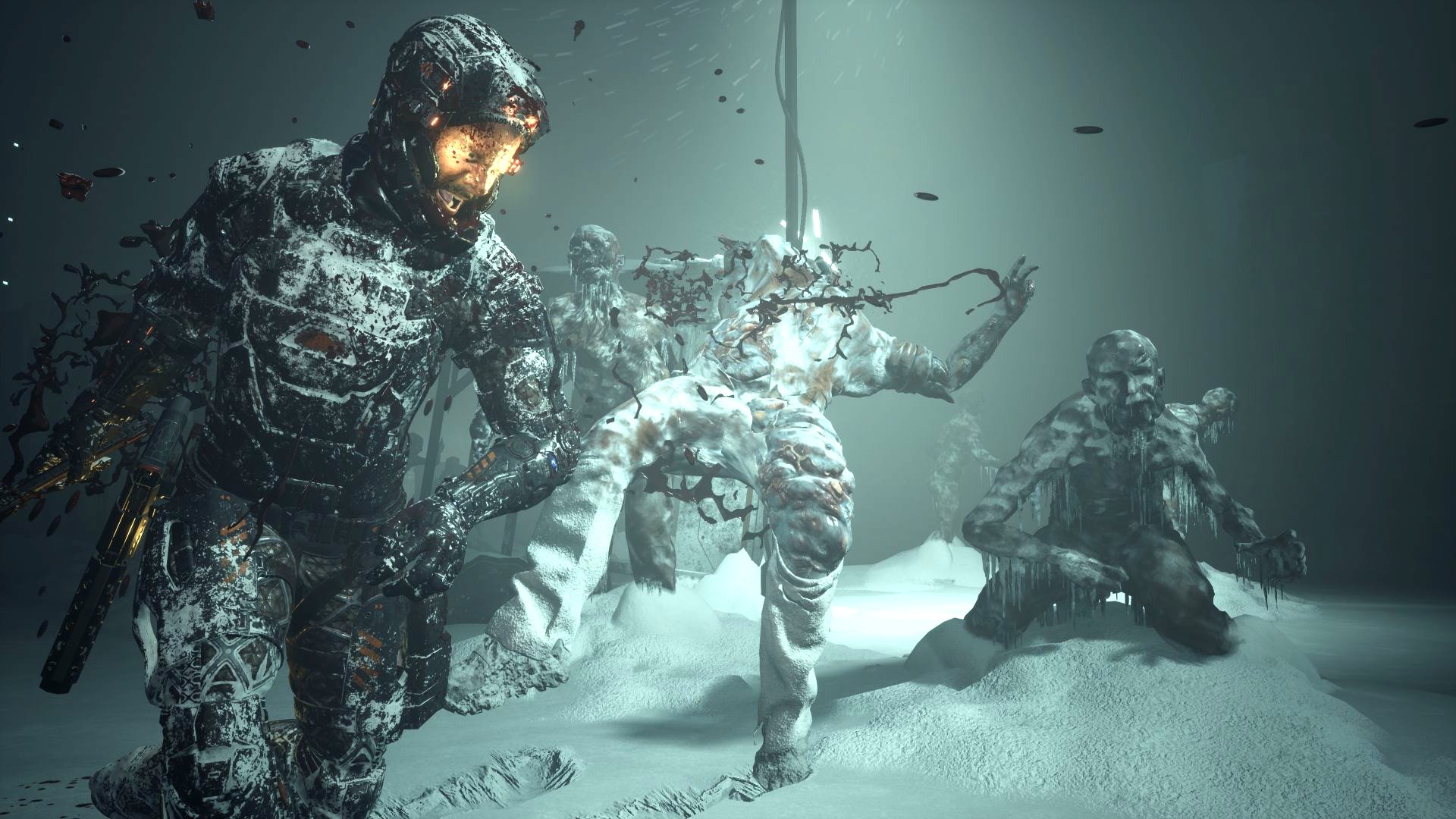


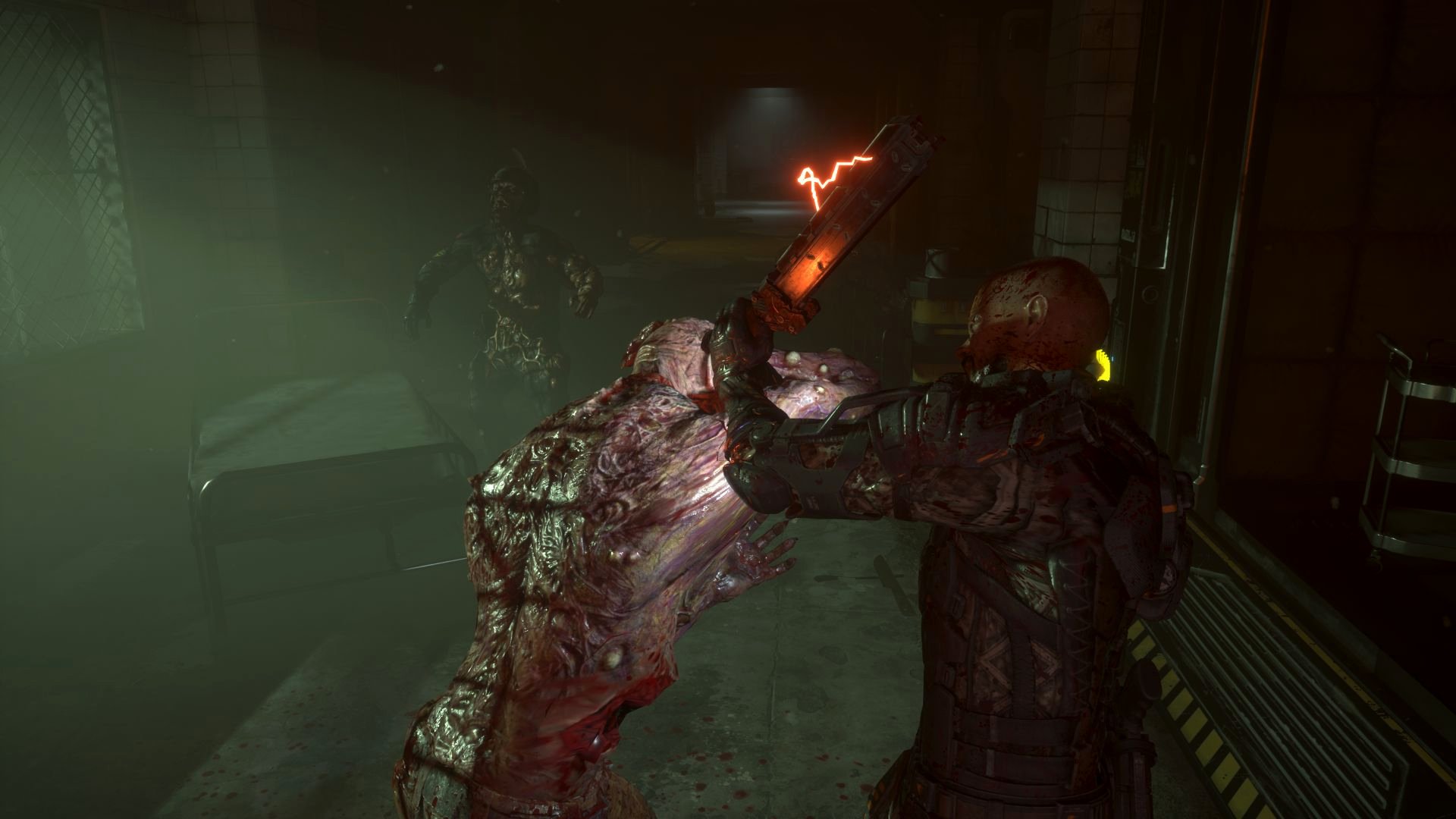

Jeff is the original founder of Analog Stick Gaming. His favorite games include The Witcher III, the Mass Effect Trilogy, Hi-Fi Rush, Stellar Blade, Hellbade: Senua’s Sacrifice, and the Legend of Heroes series, especially Trails of Cold Steel III & IV.